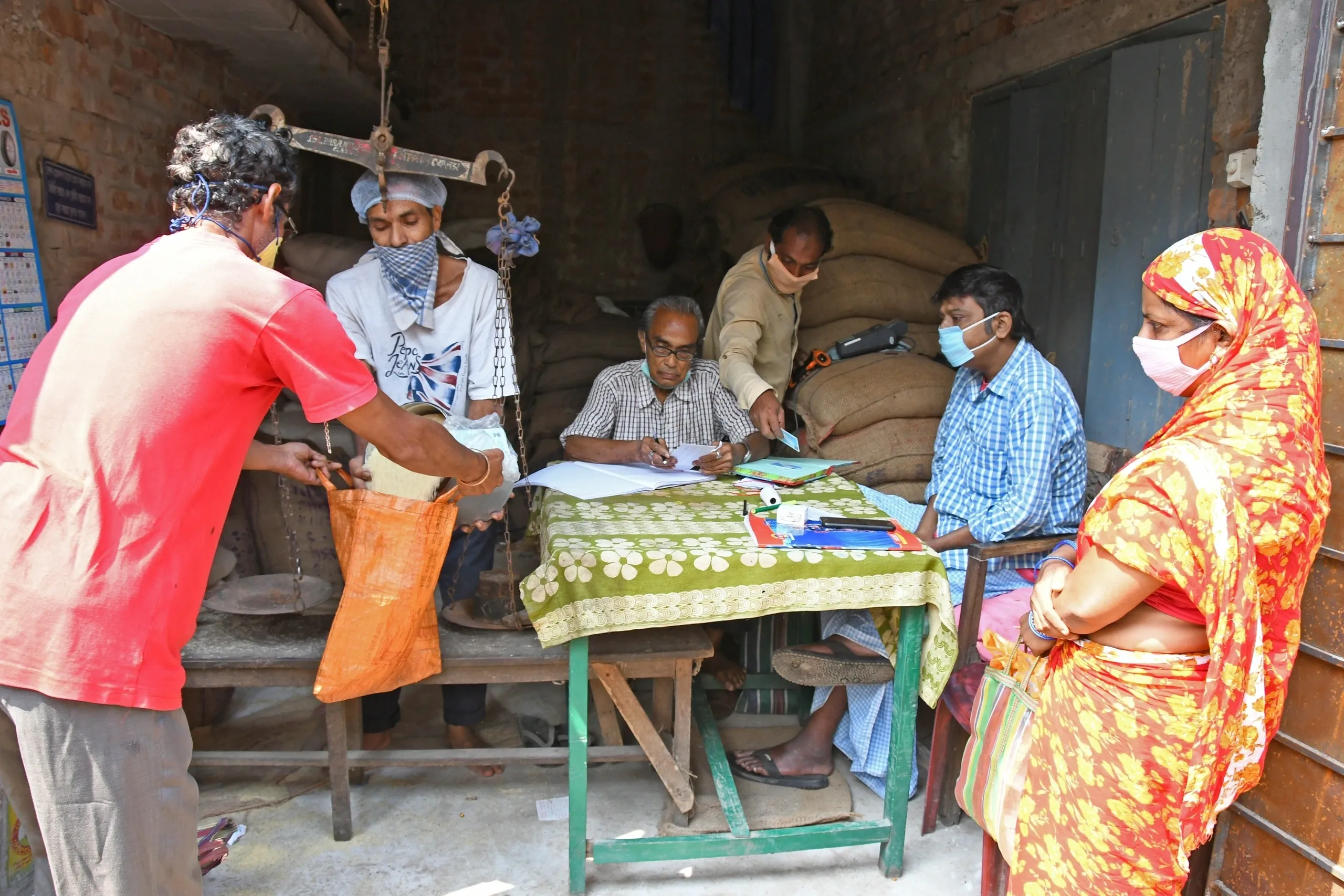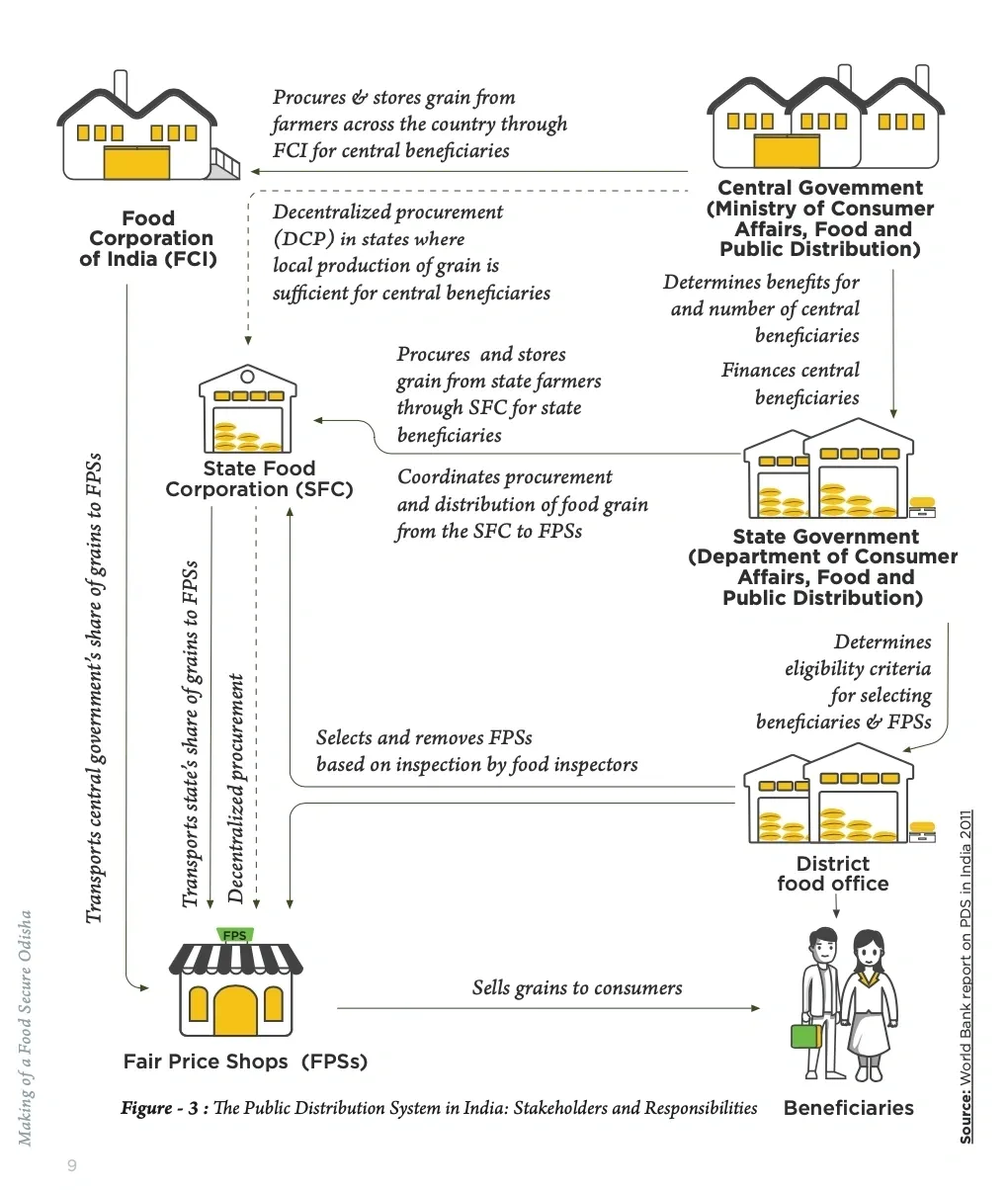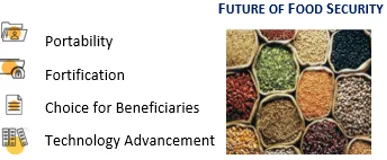Knowledge Share
New Normal, Digital Transformation, Industry 4.0
Trust | Transparency | Traceability
PDS and Blockchain Technology

India’s Public Distribution System (PDS) is one of the most extensive food distribution programs globally. It distributes over 19 million tons of rice and wheat to around 27 million citizens of the nation. PDS is one of the most significant welfare programmes of the central administration, helping farmers sell their produce at remunerative prices and the lower sections of society to buy food grains at affordable rates. India’s population had increased from 1,210 million in 2011 to an estimated 1,371 million in 2020. As per estimation, 67% of 1,371 million, or 921 million people, should be covered by the PDS. But the number covered continues to be 813 million, implying that at least 108 million people have not been covered under the National Food and Securities Act.
Pain Points: – PDS system in any part of the country has these fundamental problems, which are: –
- Lack of a robust database for farmers and irregular
- Untimely payments to the farmers
- Existence of ineligible and ghost beneficiaries
- Siphoning of food grains during transportation
- Irregularity in the quantity of food grain distributed by the ration shop owner
- Untimely arrival of food grains and lack of its movement tracking
India now has the technology to track leakages at each stage in the public distribution system. The Government suffers from what economists call a ‘principal-agent problem’. There is a crucial distinction to be made between, on the one hand, the state paying for goods and services and, on the other hand, the state producing goods and services. Over the years, the public distribution system has been the object of criticism for its inefficiency and vulnerability to misappropriation, resulting in large-scale losses to the Government. According to some estimates, nearly 40 per cent of food grains are lost annually under the PDS

World Bank report on PDS 2020
Positive Step: – In the year 2018-19, the central Government has initiated the process for the implementation of the “Integrated Management of Public Distribution System” (IM-PDS), to sustain reforms in the End-to-End Computerisation of PDS operations with the following key objectives:
- Implementation of nation-wide portability in food grains distribution
- Creation of national-level data repository for de-duplication of beneficiary data (Aadhaar based)
- Use of advanced data analytics techniques to bring about continuous improvements
Next Step: – With the intervention of IoT, VTS, GPS and Blockchain technology, authorities ensure quality and quantity for food grains don’t get compromised. Blockchain-enabled technology can also help the state agencies in curtailing the problem of black marketing, which is one of the significant reasons for illegal hoarding and price inflation in India. According to a recent survey, globally, there is an upsurge in the Government’s interest in the adoption of blockchain
- 9 in 10 Government organisations are planning to invest in blockchain for use in financial transaction management, assets management, contract management and regulatory compliance by 2021
- 7 in 10 Government executives are predicting blockchain to disrupt the arena of contract management significantly
- 14 per cent of government organisations are expecting to have blockchain in production and at scale by 2024
The full potential of the food security scheme can only be realised by the appropriate identification of target households, modernisation of the delivery system, and effective monitoring of the food security programme need to be promoted. The two main things to be considered for the future of food deliverance mechanism in the PDS system could be determined from the latest used cases.

Technology- after introducing the biometric system and Iris technology at fair price shops in the Telangana state, the govt is now working on implementing fusion technology to ensure that all transactions are computer-based.
Nutrition- the Odisha government has initiated a measure to completely eradicate malnutrition in Malkangiri District by providing rice laced with Vitamin C and Calcium compositions with the help of including special machines, newly installed in 26 rice mills to enhance nutritional value.
In stride for better governance, TRST01 is determined in bringing convergence technology through its solution platform for two important missions of the public distribution system – Food Security and Nutrition Safety.
Research and Compilation by Prateek Bebortha Business Analyst, TRST01
Share Blog on: